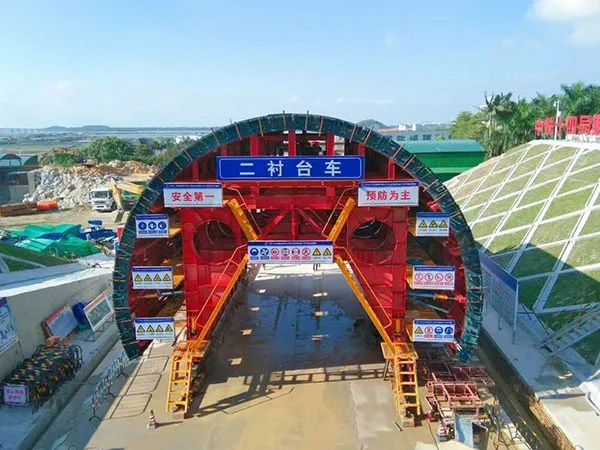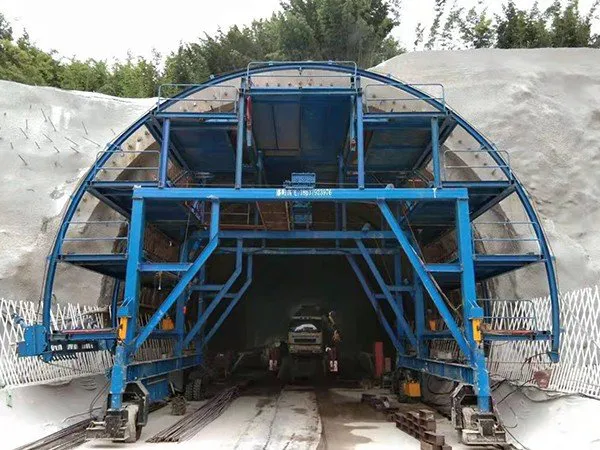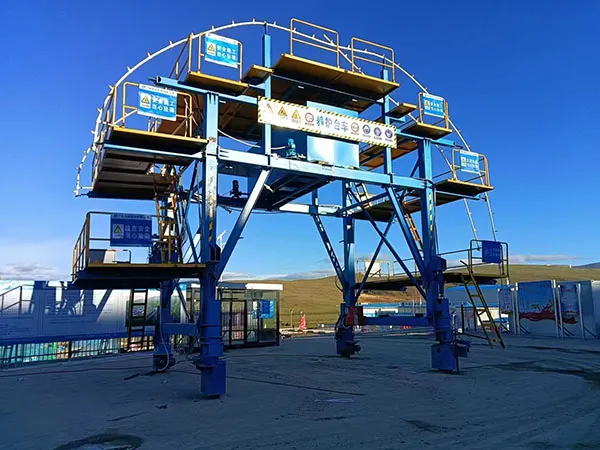Acceptance requirements for tunnel lining trolleys (also known as formwork travellers or gantries) are crucial to ensure safety, efficiency, and the quality of the final tunnel lining. These requirements are typically defined in the project specifications, relevant codes and standards, and agreed upon between the client, contractor, and sometimes a third-party inspection agency.

The acceptance process usually involves several stages:
Design Review and Approval: Before manufacturing.
Factory Acceptance Test (FAT): At the manufacturer's workshop.
Site Acceptance Test (SAT): After assembly on site.
Operational Performance Verification: During initial use.
Here's a breakdown of common acceptance requirements:
I. Design and Engineering Documentation:
Compliance with Specifications: The trolley design must meet all requirements outlined in the project contract and technical specifications.
Structural Calculations: Detailed structural analysis and calculations demonstrating stability, strength, and stiffness under all operational loads (including concrete pressure, self-weight, dynamic loads).
Drawings: Comprehensive general arrangement drawings, detailed fabrication drawings, hydraulic schematics, electrical schematics, and control system diagrams.
Material Certifications: Certificates for all primary structural materials (steel grades, bolts, etc.) and critical components (hydraulic cylinders, motors, electrical parts).
Welding Procedures & Qualifications: Welding Procedure Specifications (WPS), Procedure Qualification Records (PQR), and Welder Qualification Records (WQR) for all structural welds.
Risk Assessment & Safety Plan: Documented risk assessment for operation and maintenance, and a plan detailing safety features.
Operational & Maintenance Manuals: Clear and comprehensive manuals for operation, routine maintenance, troubleshooting, and spare parts lists.
II. Manufacturing and Assembly Quality (Often checked during FAT & SAT):
Dimensional Accuracy: Verification of overall dimensions, critical component dimensions, and assembly tolerances against approved drawings.
Welding Quality: Non-Destructive Testing (NDT) of critical welds (e.g., UT, MT, PT) as per specified standards. Visual inspection of all welds.
Surface Preparation & Coating: Correct surface preparation and application of protective coatings (e.g., paint) as per specifications, including thickness checks.
Component Installation: Proper installation and alignment of all mechanical, hydraulic, and electrical components. Secure bolting and connections.
Assembly Integrity: Ensuring the trolley is assembled correctly, securely, and without undue stress on components.

III. Functional and Performance Tests (Primarily FAT & SAT):
No-Load Functional Tests:
Movement: Smooth and accurate travel (longitudinal movement).
Formwork Operation: Correct operation of formwork stripping, setting, and adjustment mechanisms (e.g., hydraulic jacks for raising/lowering, telescoping, arching).
Hydraulic System: Leak-free operation, pressure checks, correct functioning of valves and pumps.
Electrical System: Correct wiring, grounding, operation of motors, control panels, lighting, and signaling devices.
Control System: Responsiveness and accuracy of controls (manual, semi-automatic, or automatic).
Load Tests (Simulated or Actual - carefully planned for safety):
Stability Test: Verifying stability under design loads and eccentric loading conditions (if applicable).
Deflection Test: Measuring deflections under load to ensure they are within allowable limits.
Lifting Capacity: If the trolley has lifting features, these must be tested.
Geometric Accuracy of Formwork:
Verification that the formwork can be set to the required tunnel profile, radius, and invert level with specified tolerances.
Checks for formwork surface evenness and joint tightness.
Vibration System (if applicable for concrete):
Correct operation of vibrators (frequency, amplitude).
Secure mounting and proper power supply.
Speed and Cycle Time: Verification that the trolley can achieve specified operational speeds and cycle times for formwork stripping, moving, and setting.
IV. Safety Features:
Emergency Stops: Clearly marked and easily accessible emergency stop buttons that shut down all relevant operations.
Guards and Handrails: Adequate guarding for moving parts, fall protection (handrails, safety lines).
Alarms and Warning Systems: Audible and visual alarms for movement, operational status, and fault conditions.
Lockout/Tagout (LOTO) Provisions: Systems to safely isolate energy sources during maintenance.
Access and Egress: Safe ladders, platforms, and walkways for operators and maintenance personnel.
Lighting: Adequate illumination for safe operation and inspection.
Stability Mechanisms: Anti-tipping devices, brakes, rail clamps.
Fire Suppression System (if specified): Functional check.

V. Documentation and Handover:
Test Reports: Signed-off FAT and SAT reports detailing all tests performed, results, and any rectified non-conformities.
As-Built Drawings: Updated drawings reflecting any modifications made during manufacturing or commissioning.
Training Records: Evidence that operators and maintenance personnel have been adequately trained.
Spare Parts List & Recommendations: For ongoing maintenance.
VI. Operational Performance (Post-SAT, during initial pours):
Lining Quality: The trolley must demonstrate its ability to produce a tunnel lining that meets the specified geometric tolerances (profile, thickness, alignment) and surface finish requirements.
Efficiency: Achieving the planned cycle times under real site conditions.
Reliability: Consistent performance without frequent breakdowns or malfunctions.
General Considerations:
Project-Specific Requirements: Always refer to the specific contract documents, as requirements can vary significantly.
Clear Communication: Regular meetings and clear communication between all parties are essential throughout the acceptance process.
Non-Conformance Management: A system for identifying, documenting, and rectifying any non-conformances found during inspections and tests.
Qualified Personnel: Inspections and tests should be conducted by qualified and experienced personnel.
Successful acceptance of a tunnel lining trolley is a critical step towards ensuring a safe and productive tunneling operation and a high-quality final product.
Gaofei
Address: 200m east of tulip garden, group 12 of zhangling community, hongshan street office, hongshan town, xigong district, Luoyang
Tel: +8616638856888
Contact: Gaofei Huang
Mobile: +86-18637923976
Phone: 0379-80881719/ 0379-60162687
QQ: 286827457
E-mail: gaofei@gf-bridge-tunnel.com